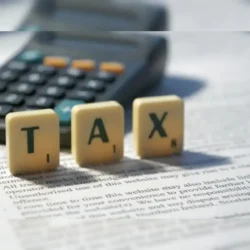Dubai is a global city known for its architectural innovation, modern infrastructure, and focus on convenience. Among the many systems that support the city’s fast-paced lifestyle, escalators play a crucial role. They are found in malls, metro stations, airports, and business complexes, ensuring smooth and efficient movement of people. Escalators in Dubai reflect the city’s commitment to advanced engineering, design efficiency, and safety standards.
Importance of Escalators in Dubai’s Urban Infrastructure
Dubai’s growth has transformed it into one of the most connected cities in the world. As buildings get taller and public spaces grow larger, the need for efficient vertical and horizontal transportation becomes vital.
Facilitating Movement in Public Spaces
Escalators are an essential part of daily commuting. In locations like the Dubai Metro, shopping malls, and airports, escalators move thousands of people every hour. They save time and reduce congestion in crowded areas.
Supporting Commercial and Residential Buildings
High-rise buildings and mixed-use developments rely on escalators to connect different floors efficiently. In commercial complexes, they create smooth access between retail spaces, improving customer flow and user experience.
Enhancing Accessibility
Dubai prioritizes accessibility for all residents and visitors. Escalators, along with elevators and moving walkways, help ensure barrier-free access for people with mobility challenges. Many new developments include escalators designed to meet international accessibility standards.
Types of Escalators Used in Dubai
Escalators are designed for different purposes, depending on location, structure, and user flow. In Dubai, modern buildings incorporate various escalator types to meet these needs.
Indoor Escalators
Indoor escalators are commonly found in shopping malls, office towers, and metro stations. They operate in controlled environments, protected from weather elements, ensuring a long service life with minimal maintenance.
Outdoor Escalators
Outdoor escalators are used in areas exposed to sunlight, dust, and temperature fluctuations. In Dubai’s hot climate, these escalators are built with weather-resistant materials and cooling systems to ensure durability.
Parallel and Crisscross Escalators
Parallel escalators move in the same direction on adjacent paths, often used in large malls. Crisscross escalators, on the other hand, alternate directions at different levels, saving space while managing crowd flow efficiently.
Moving Walkways
Although not technically escalators, moving walkways serve a similar purpose. They are commonly installed in Dubai International Airport and large transport hubs to assist passengers in covering long distances comfortably.
Key Components and Working Mechanism of Escalators
Escalators are complex systems that combine electrical, mechanical, and structural engineering. Understanding their components helps explain how they function safely and efficiently.
Step Chain and Motor System
The motor system powers the escalator, while the step chain moves the steps in a continuous loop. These elements are designed for reliability and smooth operation, even under heavy usage.
Balustrades and Handrails
The balustrade provides structural support, while the handrail moves at the same speed as the steps, ensuring user stability. Modern designs in Dubai emphasize safety, using non-slip materials and durable finishes.
Safety Mechanisms
Escalators in Dubai are equipped with multiple safety features such as emergency stop buttons, skirt brushes, and step demarcations. These systems prevent accidents and comply with international safety regulations.
Safety Standards and Regulations in Dubai
Dubai’s building and infrastructure projects follow strict safety and engineering standards. Escalator installation and maintenance are regulated to ensure public safety and long-term performance.
Regulatory Oversight
Authorities such as Dubai Municipality and the Roads and Transport Authority (RTA) oversee safety compliance. They mandate periodic inspection, certification, and adherence to international codes like EN 115 and ASME A17.
Routine Maintenance and Inspection
Escalator systems require regular maintenance to remain reliable. Maintenance includes cleaning mechanical parts, checking lubrication, and testing safety devices. Routine inspection reduces the risk of technical faults and downtime.
Emergency Preparedness
Buildings in Dubai are designed with emergency procedures in place. Escalators are equipped with power backup and emergency stop systems to ensure safe evacuation in case of power failure or other incidents.
Energy Efficiency and Sustainability in Escalator Design
Sustainability is an important aspect of modern architecture in Dubai. Escalator manufacturers and developers are adopting eco-friendly technologies that reduce energy consumption and operational costs.
Smart Energy-Saving Features
Modern escalators use sensors that detect passenger movement. When not in use, they switch to low-speed or standby mode, saving energy. This feature is common in Dubai’s malls and metro stations.
Use of Recyclable Materials
Developers prefer escalators built from recyclable steel and aluminum. These materials reduce environmental impact during manufacturing and installation.
Integration with Green Building Standards
New projects in Dubai often align with sustainability certifications such as LEED and Estidama. Escalators that meet these standards contribute to a building’s overall energy rating and environmental performance.
Role of Escalators in Dubai’s Tourism and Public Spaces
Escalators contribute significantly to the comfort and efficiency of Dubai’s public areas. They enhance the visitor experience in major attractions and help maintain the city’s global image of convenience.
In Shopping Malls
Dubai’s shopping malls are among the largest in the world. Escalators connect multiple levels of retail and entertainment spaces, allowing smooth navigation for millions of visitors each year.
In Metro and Transport Hubs
The Dubai Metro and bus terminals rely heavily on escalators for passenger movement. These systems are engineered for continuous operation, managing thousands of passengers daily.
In Tourist Attractions
Tourist sites such as Burj Khalifa, Dubai Frame, and museums use escalators to guide visitors efficiently through observation decks and exhibition areas. Their design complements the aesthetics of each landmark.
Future Trends in Escalator Technology
The escalator industry in Dubai continues to evolve with new technologies that enhance safety, efficiency, and comfort.
Digital Monitoring Systems
IoT-enabled escalators can send performance data in real time. Maintenance teams can monitor wear and tear, predict breakdowns, and schedule repairs proactively.
Touchless Operation
Post-pandemic trends have increased the demand for touch-free technology. Some escalators now feature motion sensors for activation, minimizing physical contact.
Aesthetic Integration
Architectural trends emphasize seamless integration of escalators into building interiors. Designers in Dubai focus on lighting, glass finishes, and space optimization to maintain visual appeal.
Conclusion
Escalators in Dubai are more than just mechanical systems. They represent the city’s drive for innovation, safety, and convenience. From airports to malls and metro stations, these systems support Dubai’s urban lifestyle and infrastructure. With advancements in technology and sustainability, escalators will continue to play a vital role in shaping the city’s modern landscape. As Dubai grows, its commitment to efficient mobility and superior engineering will remain at the forefront of its development.



